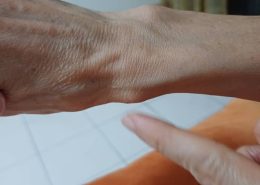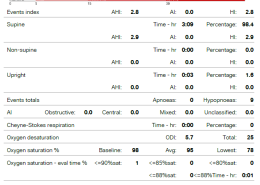having pain in knee mostly after driving how to improve or relief from knee pain
Experiencing cold hands during sleep can be attributed to several factors, and understanding the underlying cause is essential for determining the appropriate solution. Here are some potential reasons and corresponding solutions: 1. Environmental Factors: - Cold Room Temperature: If the room is tooRead more
Experiencing cold hands during sleep can be attributed to several factors, and understanding the underlying cause is essential for determining the appropriate solution. Here are some potential reasons and corresponding solutions:
1. Environmental Factors:
– Cold Room Temperature: If the room is too cold, it can lead to cold extremities.
– Solution: Ensure that your sleeping environment is adequately heated. Use additional blankets or a warmer duvet, and consider wearing thermal sleepwear or gloves to bed.
2. Circulatory Issues:
– Raynaud Phenomenon: This condition causes blood vessels in the fingers to constrict more than usual in response to cold or stress, leading to cold, discolored fingers.
– Solution: Keep your hands warm by wearing gloves, even indoors if necessary. Avoid caffeine and smoking, as these can exacerbate symptoms. If symptoms persist, consult a healthcare professional for potential medication options.
3. Peripheral Neuropathy:
– Conditions such as diabetes or other nerve-related issues can lead to altered sensations in the hands, including coldness.
– Solution: If you suspect neuropathy, it is important to manage any underlying conditions, such as maintaining blood sugar levels in diabetes. Consult with a healthcare provider for a comprehensive evaluation and management plan.
4. Poor Circulation:
– This can be due to various factors, including sleeping positions that restrict blood flow.
– Solution: Ensure you are sleeping in a position that does not compress your arms or hands. Regular exercise and stretching can improve overall circulation.
5. Hypothyroidism:
– An underactive thyroid can lead to cold intolerance and cold extremities.
– Solution: If you have other symptoms of hypothyroidism, such as fatigue, weight gain, or dry skin, consider getting your thyroid function tested by a healthcare provider.
6. Anemia:
– Low levels of hemoglobin can lead to poor oxygen delivery to tissues, causing cold hands.
– Solution: Ensure a diet rich in iron, vitamin B12, and folate. If anemia is suspected, a blood test can confirm the diagnosis, and appropriate supplementation or dietary changes can be made.
If your symptoms persist or are accompanied by other concerning signs, it is advisable to seek medical evaluation to rule out any underlying health issues. A healthcare professional can provide a tailored approach based on a comprehensive assessment of your symptoms and medical history.
See less




Experiencing knee pain after driving is a common issue, often related to prolonged periods of sitting in a fixed position, which can strain the knee joint. Here are some strategies to help alleviate and prevent knee pain associated with driving: 1. Adjust Your Seat and Posture: - Ensure your seat isRead more
Experiencing knee pain after driving is a common issue, often related to prolonged periods of sitting in a fixed position, which can strain the knee joint. Here are some strategies to help alleviate and prevent knee pain associated with driving:
1. Adjust Your Seat and Posture:
– Ensure your seat is positioned to allow your knees to be slightly bent and at the same level or slightly lower than your hips. This helps reduce strain on the knee joint.
– Adjust the backrest to support your lower back, promoting an upright posture.
– Consider using a lumbar support cushion to maintain the natural curve of your spine.
2. Take Regular Breaks:
– During long drives, take breaks every hour to stretch and walk around. This helps improve circulation and reduces stiffness in the knees.
3. Strengthening and Stretching Exercises:
– Engage in exercises that strengthen the muscles around the knee, such as quadriceps and hamstring strengthening exercises. This can provide better support to the knee joint.
– Incorporate stretching exercises for the legs, focusing on the quadriceps, hamstrings, and calves to maintain flexibility.
4. Use of Ice and Heat:
– Apply ice packs to the knee after driving if you experience pain or swelling. Use a cold gel pack or a bag of ice wrapped in a thin towel for 15 minutes every 1 to 2 hours as needed.
– Alternatively, use heat therapy before driving to relax the muscles and improve flexibility.
5. Pain Relief Medication:
– Over-the-counter pain relievers such as acetaminophen or NSAIDs like ibuprofen can help manage pain. However, these should be used as directed and not for prolonged periods without consulting a healthcare provider.
6. Consider Knee Support:
– Wearing a knee brace or using a knee support sleeve can provide additional stability and reduce discomfort during driving.
7. Footwear:
– Wear comfortable, supportive shoes when driving to ensure proper foot positioning and reduce strain on the knees.
8. Consult a Healthcare Professional:
– If knee pain persists despite these measures, it may be beneficial to consult a healthcare professional for a thorough evaluation. They may recommend physical therapy or other interventions tailored to your specific condition.
By implementing these strategies, you can help manage and potentially reduce knee pain associated with driving. If symptoms persist or worsen, seeking professional medical advice is crucial to address any underlying issues effectively.
See less